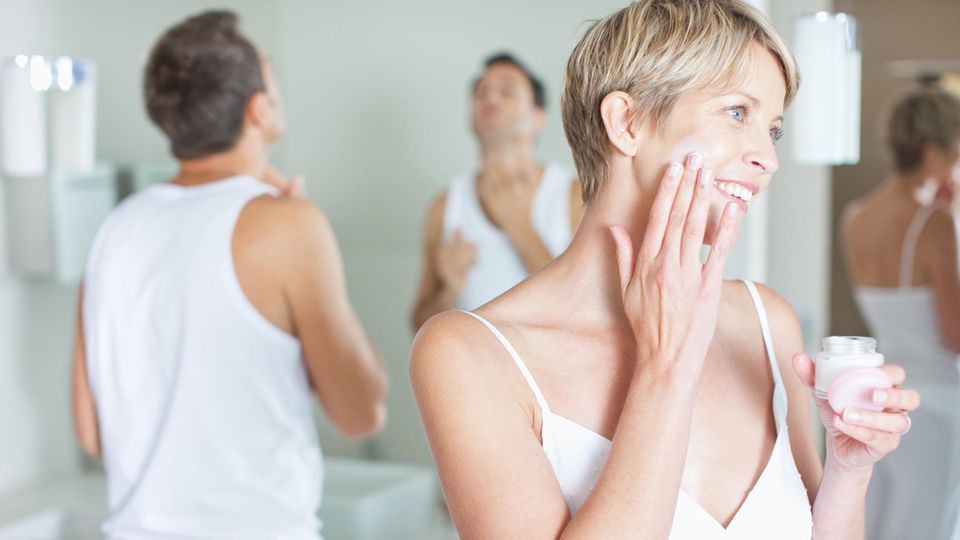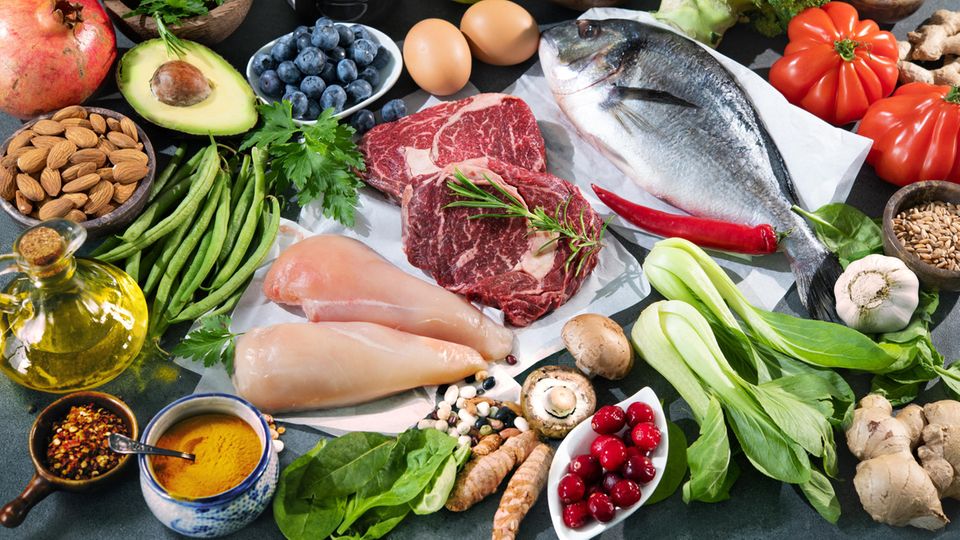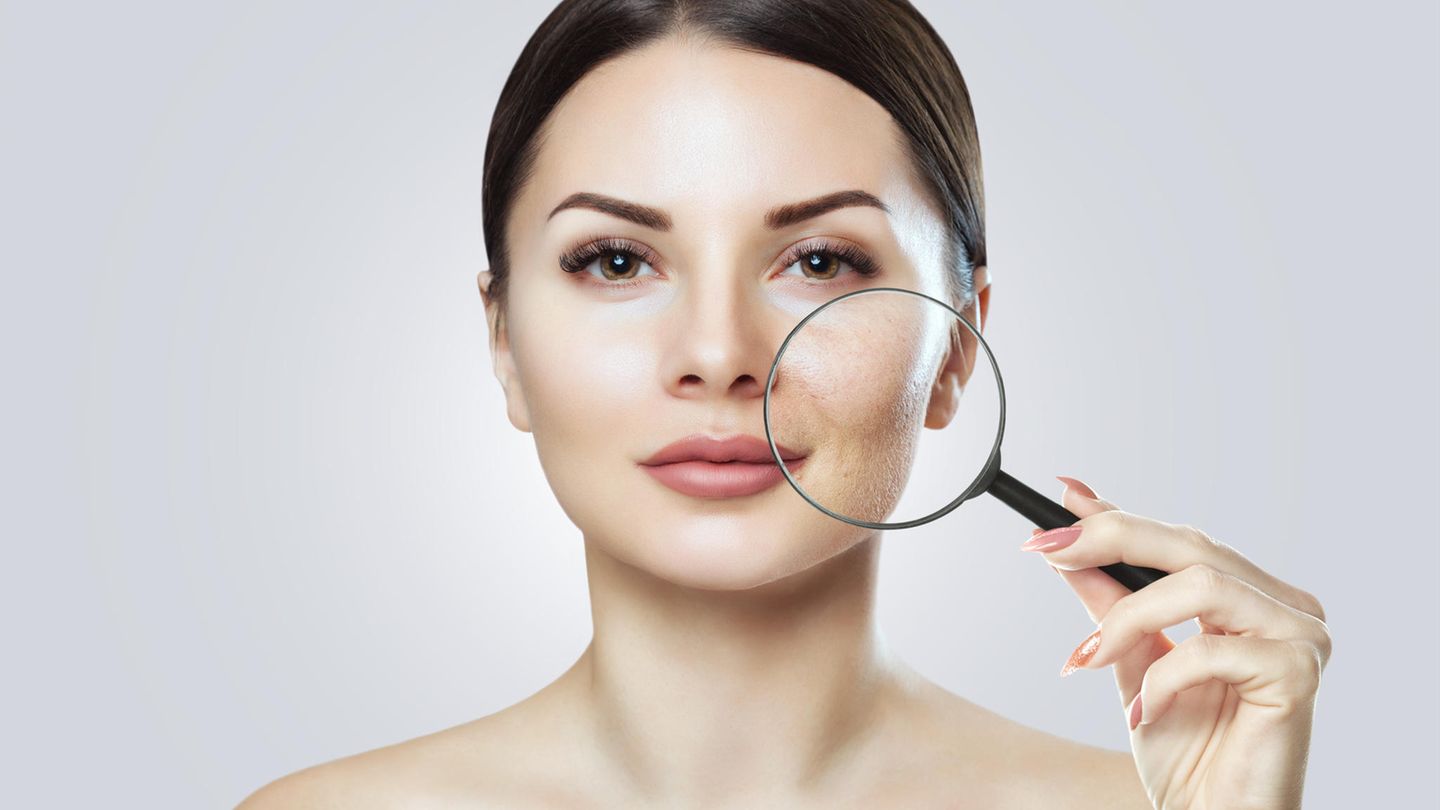Large pores
Oily skin? This is how you get rid of the unwanted shine
Copy the current link
The skin’s sebum production actually serves to protect against external influences. However, if the glands produce too much sebum, we get an oily complexion – especially on the face.
Oily skin is primarily an aesthetic problem, but secondly also a health problem: excessive sebum production creates an oily complexion, which clogs the pores and promotes skin impurities. As if that wasn’t annoying enough, those affected also have to deal with pimples and blackheads that are increasingly sprouting on the face, shoulder and back areas. But why do some people actually tend to have oily skin, why do the sebaceous glands secrete too much lubricant and – more importantly – how can you permanently improve the complexion? The star got to the bottom of the questions.
How does oily skin develop? These are the causes
Normally, the sebaceous glands produce one to two grams of body fat, also known as sebum. However, if this amount is exceeded, the pores become clogged and expand, the sebum can no longer drain away properly and an oily film forms on the surface of the skin. In addition, bacteria can spread more quickly on the surface and thus trigger inflammation, which promotes skin blemishes such as blackheads and pimples. But how does such overproduction come about? The most well-known causes of oily skin with large pores include hereditary predispositions, stress, poor (mal)nutrition, ovarian diseases, Parkinson’s disease and excessive alcohol consumption. But regular use of medications such as hormone preparations can also influence sebum production.
In most cases, however, our own hormones cause oily skin – more specifically, the male sex hormones known as androgens. A woman’s body also produces this hormone, so both genders are equally aware of the problem. Due to excessive androgen production, teenagers during puberty in particular suffer from oily skin combined with pimples, blackheads or acne, although adults can also be affected by this. Especially women when their hormone production changes, for example due to pregnancy, stopping the birth control pill or shortly before their menstruation. This means that you are not immune to getting oily skin at any age. The positive news, however, is that there are many effective methods you can use to significantly improve your skin’s appearance and reduce skin imperfections.
How to properly cleanse and care for oily skin
On the face, oily skin usually occurs in the so-called T-zone, i.e. on the forehead, nose and chin. This is mainly because there are more sebaceous glands in these areas than, for example, on the cheeks. But the scalp, back and shoulders can also produce too much sebum and therefore appear oily. This makes it all the more important to clean and care for the affected areas properly. Ideally every morning and every evening: However, commercially available soaps and creams are the wrong choice as they usually only make the symptoms worse. It’s better to use gentle cleansers that you use to cleanse your oily skin regularly to clear clogged pores of excessive sebum. For the face, we recommend a non-greasy cleansing gel (PH-neutral), gentle peelings with salicylic acid (Important: only use a maximum of twice a week to remove dead skin) or a mild cleansing foam.
Healing clay in the form of a face mask is also suitable for cleaning oily skin, which is primarily intended to shrink large pores that are dilated by excessive sebum production. A facial toner can also help, especially if it contains alcohol (i.e. ethanol) and therefore has a disinfecting effect on the skin. And last but not least, a gentle cleansing milk is also recommended, but you should make sure to only use one with fat-absorbing properties. However, remember not to degrease your skin too often – otherwise you risk destroying the natural protective acid mantle, so that the sebaceous glands in turn produce even more oil to compensate for the loss. That wouldn’t be the point.
The following cleaning products are recommended here:

After cleansing comes care – because even oily skin needs moisture. When using day and night creams, make sure that the products are not moisturizing but do have moisturizing properties. Here, too, there are special care products for oily skin that are intended to reduce the flow of sebum and minimize the typical greasy shine. However, when using cosmetic products on a daily basis, you should definitely pay attention to the words “non-comedogenic” on the packaging. “Comedogenic” refers to certain ingredients that are said to clog pores. And of course, that’s the last thing you want when you’re putting on makeup.
Have you ever noticed that your skin shines particularly brightly around midday and less so towards late evening? This is sometimes due to the fact that your sebaceous glands work at different levels throughout the day – which is why it is advisable to use oil-free make-up with mattifying pigments that bind excess oil on the skin. However, only apply the product to your face after thorough cleansing and avoid powdering several times, otherwise the powder will mix with the sebum or greasy shine and in turn provides an ideal breeding ground for bacteria that promote skin impurities such as pimples and blackheads .
The following cleaning products are recommended here:
Which foods support healthy skin?

As already mentioned at the beginning, our diet also influences the appearance of our skin. Especially if you suffer from oily skin, it is advisable to avoid foods that are particularly high in salt, fat or sugar – because they promote sebum production. However, make sure you have a balanced diet that includes more fresh fruits and vegetables and fewer animal products such as red meat, milk, butter and cheese, as they are rich in saturated fatty acids. In addition to a healthy diet, it is also beneficial if you drink enough water (without taste) throughout the day. However, foods that are rich in vitamin A or zinc are recommended, such as:
- Carrots
- spinach
- broccoli
- paprika
- Cherries
- grapefruit
- rye
- sunflower seeds
- Wheat bran
- Chia seeds
- Walnuts
- sesame
- hemp
- linseed
Which home remedies help against oily skin?
In almost every household you can find natural ingredients that can help you remove the greasy shine. This includes, among other things, lemon juice: the acid it contains not only kills germs, but also causes large pores to contract. To do this, simply mix a teaspoon of juice with half a spoonful of water, hold a cotton pad in the liquid and then dab it on your skin. Leave the solution to work for ten minutes before washing it off with lukewarm water.
*This article contains so-called affiliate links to products in online shops. If a user clicks on it and buys something, the publisher receives a commission from the retailer, not the manufacturer. There is more information about this .
Source: Stern
I’m Caroline, a journalist and author for 24 Hours Worlds. I specialize in health-related news and stories, bringing real-world impact to readers across the globe. With my experience in journalism and writing in both print and online formats, I strive to provide reliable information that resonates with audiences from all walks of life.




